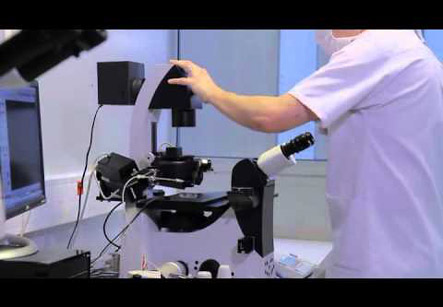Intracytoplasmic Morphologically IMSI
Intracytoplasmic morphologically-selected sperm injection, also known as IMSI, is a laboratory technique used in IVF treatment. It involves inserting morphologically selected sperm into the egg. IMSI is a real-time method where sperms are selected before the microinjection. This technique requires an inverted microscope which is able to provide a much greater magnifying power (around 6000 times) than those that are normally used in reproductive laboratories (200 times) to carry out the ICSI.
With this microscope, IVF specialists can see the internal morphology of sperm and discard those presenting with abnormalities. When clinicians are able to select the sperm without morphological alterations, it is shown to increase the chances of successful implantation of pre-embryo and decrease the chances of miscarriage.
The development of a modified intracytoplasmic sperm injection (ICSI), called intracytoplasmic morphologically selected sperm injection (IMSI), showed that a thorough morphological investigation of the sperm, under the magnification of 6600×, allows an improvement in the outcomes.
The current studies are demonstrating that IMSI not only signi?cantly improves the percentage of top-quality embryos, implantation and pregnancy rates, but also significantly reduces miscarriage rates as compared with ICSI.

The development of a modified intracytoplasmic sperm injection (ICSI) method, called intracytoplasmic morphologically selected sperm injection (IMSI), has enabled the improvement of pregnancy rates. Studies have shown no significant difference in fertilization between ICSI and IMSI groups. However, implantation and pregnancy rates were almost 3-times higher in IMSI cycles. Moreover, the miscarriage rate was more than 40% lower in IMSI cycles as compared with ICSI cycles.
Since its ?rst introduction in 1992, intracytoplasmic sperm injection (ICSI), where one sperm is selected, immobilized, aspirated with amicroinjection needle and injected into the egg cytoplasm, has been widely used to treat subfertility and has become the treatment of choice in male factor infertility cases.
One of the main concerns in ICSI is the selection of a sperm with normal morphology and motility, based on evaluation of its tail, neck and head. ICSI is performed under an overall optical magni?cation of 400X, which makes it possible to detect, in the living state, most of the sperm abnormalities recognized by the conventional basic sperm analysis, performed on ?xed and stained sperm samples. Thus, this method has severe limitations, since the magni?cation of 400X only enables the observation of major morphological defects in sperm, whereas minor morphological defects, which seem to be related to the ICSI outcomes, remain unidenti?ed. Thus, sperm appearing as morphologically normal at this magni?cation may possibly show various structural abnormalities that may negatively in?uence embryo development and pregnancy establishment. This fact may explain failure of ICSI on a large extent. Despite its advantages of bypassing male factor infertility and enabling the morphological evaluation of the sperms, ICSI- pregnancy rates are only 30–45%.
Application of IMSI in patients undergoing conventional IVF/ICSI treatment requires an intense morphological investigation of the spermatozoon that favours ICSI outcome improvement. It has been reported that the selection of morphologically normal motile spermat high magni?cation is positively associated with pregnancy rates in couples with previous and repeated implantation failures and in patients with an elevated degree of DNA fragmented sperm.
A positive association has been established recently between high-magni?cation sperm selection with normal nuclear shape and pregnancy outcome in patients with repeated conventional ICSI failures. A noticeable improvement in implantation and birth rates in patients with normal, moderate and elevated degree of sperm DNA fragmentation. It has been suggested that high-power magni?cation (6600X) allows the detection and exclusion of sperm cells containing nuclear vacuoles, which could re?ect molecular defects responsible for abnormal chromatin-remodelling during sperm maturation and result in sperm DNA damage compromising ICSI outcomes.